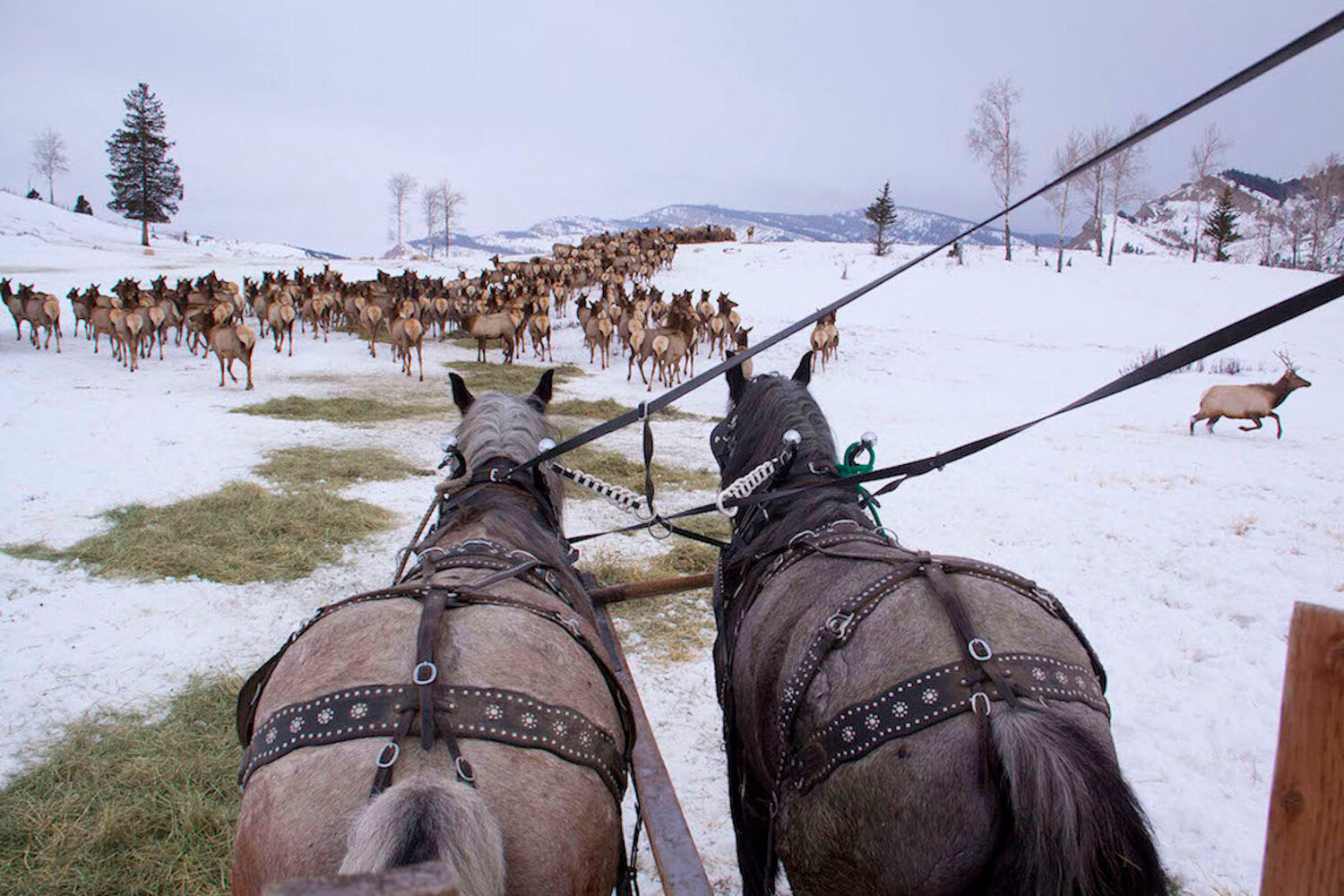For the first time in its history, the Wyoming Game and Fish Department has a formal plan in place for managing the state’s 21 winter elk feedgrounds.
The 96-page document allows for changes to feedgrounds that could avert the worst consequences of an ugly disease that’s ramping up — a sickness that scientists expect will devastate Northwest Wyoming’s six fed elk herds in the long term if feeding continues. Notably, the plan does not compel reform or call for closing feedgrounds, but it does open the door for wholesale changes to the system of feeding elk that’s been in place for a century.
This item is available in full to subscribers.
To continue reading, you will need to either log in to your subscriber account, below, or purchase a new subscription.
Please log in to continue |

PINEDALE — For the first time in its history, the Wyoming Game and Fish Department has a formal plan in place for managing the state’s 21 winter elk feedgrounds.
The 96-page document allows for changes to feedgrounds that could avert the worst consequences of an ugly disease that’s ramping up — a sickness that scientists expect will devastate Northwest Wyoming’s six fed elk herds in the long term if feeding continues. Notably, the plan does not compel reform or call for closing feedgrounds, but it does open the door for wholesale changes to the system of feeding elk that’s been in place for a century.
“What are the possibilities? I think the possibilities are still limitless,” said Mark Gocke, a public information officer for Game and Fish’s Jackson and Pinedale regions. “Collectively, a working group — for the Feedground Management Action Plans — is going to have to make recommendations.”
“That’s just how this process works,” he added. ”Everybody is going to have to be on board.”
The Wyoming Game and Fish Commission approved the feedground plan unanimously on March 13 in Pinedale after making a few changes requested by outfitters and others leery of altering the feeding regime.
First, however, Game and Fish staffers introduced the plan, explaining its provenance: A separate plan for managing chronic wasting disease. State officials deliberately left out elk feedgrounds in the CWD plan in anticipation of a separate plan. The two issues, however, are intertwined, because the consequences of CWD are causing managers to rethink whether continued feeding is still in the best interest of elk and those who care about elk.
“CWD is a big deal, but it doesn’t mean that all the other biological, social, political and economic factors that are related to the feedgrounds just go away or become any less important,” Game and Fish Regional Wildlife Coordinator Cheyenne Stewart told commissioners.
Those factors are what have kept the feedgrounds around. Routine winter feeding of wildlife is generally considered an antiquated practice that’s been abandoned in most of the West because it’s costly, spreads disease and has unintended consequences like causing animals to forget how to migrate. But there are also benefits: Feedgrounds have propped up populations and kept elk away from private land and out of conflict with cattle, which can contract a different disease — brucellosis — from elk.
Wyoming’s overarching Elk Feedground Management Plan does not trigger on-the-ground changes in itself. Rather, it lines out a process. At the heart of that process are the coming Feedground Management Action Plans, which will be herd-specific and resemble plans that were developed more than a decade ago to address brucellosis.
The feedground plans will be developed for two elk herds at a time — one each in the Pinedale and Jackson regions, concurrently. There are six fed elk herds split evenly within the two regions, which means it’ll take three years to complete plans prescribing management changes for Wyoming’s feedground region, which includes 21 state-run elk feedgrounds plus the U.S. Fish and Wildlife Service’s National Elk Refuge — which is updating its own management plan.
It’s not yet decided which herds’ plans come first, but agency officials will make those decisions internally next month in Riverton following the Game and Fish Commission meeting, Gocke said.
Working groups assembled for each elk herd’s Feedground Management Action Plans will meet in public. They’ll culminate in written plans that include changes and goals. Working group members will need to agree to those.
“This plan provides an opportunity to take a step back, examine the status quo, and chart a path forward, together,” Game and Fish’s new plan states in its concluding remarks.
The working groups will likely include parties historically resistant to scaling back elk feeding, like ranchers and outfitters. Whether they can agree to significant changes remains to be seen.
If they don’t agree on changing much as CWD spreads, the feedground region is likely heading toward an era of fewer elk and sicker elk — at least that’s what the experts expect if Wyoming keeps on feeding.
WyoFile is an independent nonprofit news organization focused on Wyoming people, places and policy.